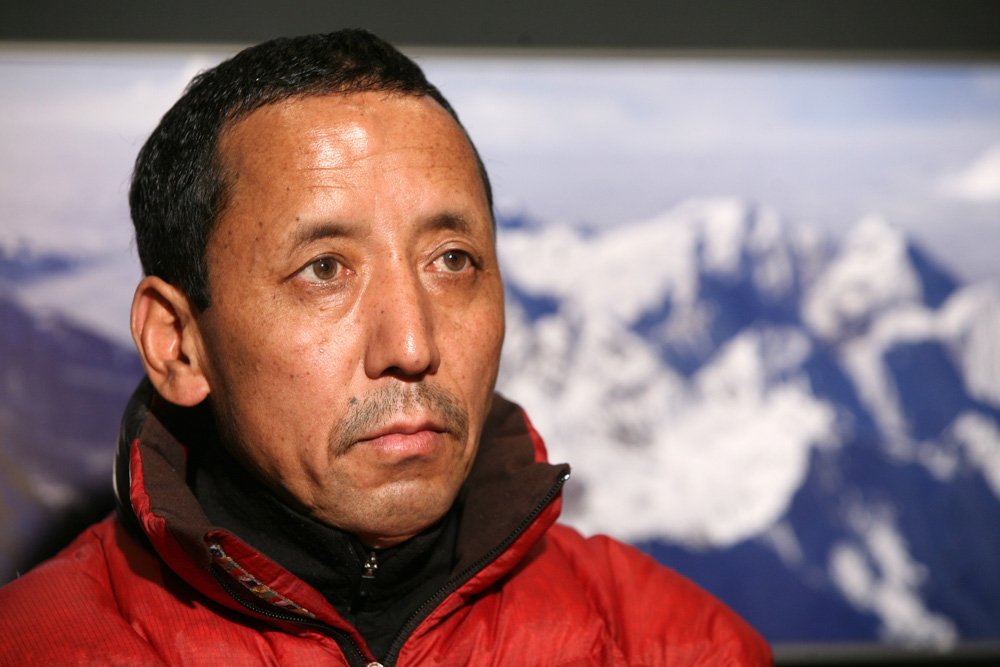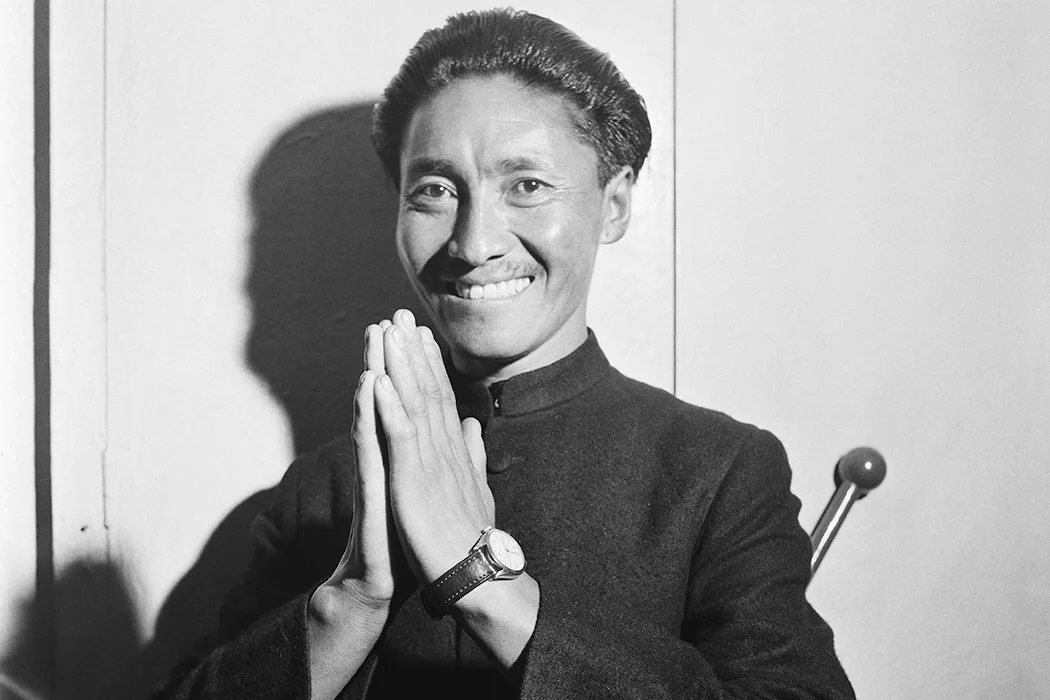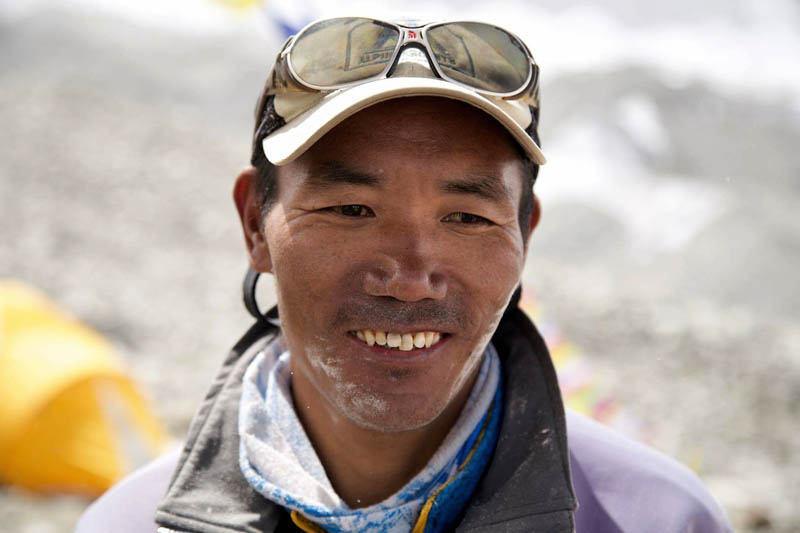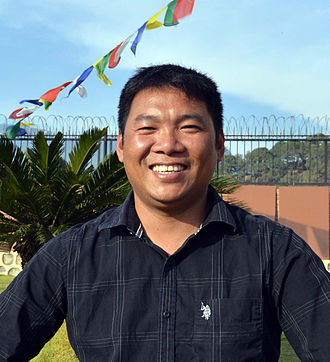Apa Sherpa, also known as Appa Sherpa or Lhakpa Tenzing Sherpa, is a Nepalese mountain climber and guide who set the record for most ascents of Mount Everest with 21. Other Sherpas later broke the record in 2018. He first summited Everest in 1990, and his last time to the summit was in 2011.
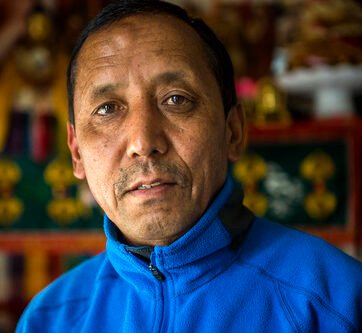 |
|
| Born | 20 January 1960 (age 64) Thame, Nepal |
| Nationality | Nepalese |
| Other Names | Apa Sherpa Appa Sherpa Lhakpa Tenzing Sherpa |
| Wife | Yangjin Sherpa |
| Son | Tenjing Sherpa and Pemba Sherpa |
| Daughter | Dawa Sherpa |
| Known for | 21 ascents of Mount Everest |
Early Life and Childhood
Apa (Lhakpa Tenzing Sherpa) was born in 1960 in Thami, Nepal. He grew up in the small town of Thami (or Thame), which is in the Khumbu valley in the far north of Nepal, just west of Mount Everest. Sherpas, who are Nepalese, Tibetans, and Sikkimese and work as porters and guides on expeditions in the Himalayas, are famous for living in the area. Tenzing Norgay, a famous climber, used to live in Thami.
Apa’s family was very poor, as were most in the area. Apa’s father was a shepherd and died when he was about 12 years old. As the eldest child, Apa quit school and started carrying supplies for trekking groups in the area to make money for his family. His ability to carry heavy things (despite being small) and his positive attitude made him stand out right away to his bosses.
One of his European supporters paid for him to go to the Himalayan Trust School in Khumjung, which was started by Sir Edmund Hillary, the first person to climb Everest. But because of how things were with Apa’s family, he had to quit school after two years and go back to working as a porter.
Personal Life
Apa (Lhakpa Tenzing Sherpa) married Yangjin in 1988 and has two sons—Tenjing and Pemba—and a daughter, Dawa. A fourth child died in 2004. In December 2006, the family moved to the United States with the help of his friend Jerry Mika to provide their children with a better education and for business opportunities. They live in Draper, Utah.
In April 2009, Apa founded the Apa Sherpa Foundation, dedicated to the improvement of education and economic development in Nepal. Although he worked as a guide for years, he wants young people to have other career options.
Career as Mountaineer
His first big climbing trip was to Annapurna in 1985, where he worked as a cook. In 1987, he went back to that mountain as a porter. Apa started working on Everest trips in 1988 and tried to reach the top several times over the next two years but failed each time. As of May 1990, he had finally reached the top. That month, he went on a journey to New Zealand with other first-timers Peter Hillary (son of Sir Edmund Hillary) and Rob Hall (who went on to lead many successful Everest expeditions, including the tragic trip that ended in 1996).
For the next twenty years or so, Apa almost never missed an opportunity to climb Everest. In 1992, he made two successful attempts. He didn’t reach the top in just two years: 1996, when he didn’t climb anything, and 2001, when severe weather made it impossible to continue. With his 11th trip to the top of Everest in 2000, he broke the record for most climbs. With each subsequent climb, he set a new record.
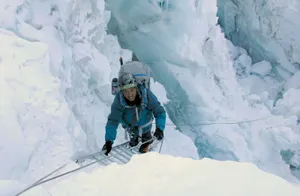
Apa joined the first Eco Everest Expedition in 2008 and participated in others as well. Along with climbing to the top of Everest, each of these trips was meant to bring attention to environmental and climate change problems that are affecting the mountain, especially the fast melting of the huge Khumbu Icefall near the base of the mountain. The trips used eco-friendly methods (like solar cookers) and picked up and hauled away tons of trash and camping and climbing gear that had been left behind by previous trips.
Apa’s climb in May 2010 was especially important because it was his 20th successful attempt to reach the top of Everest. In May 2011, a year later, he reached the top of his 21st mountain. Phurba Tashi Sherpa (2013) and Kami Rita Sherpa (2017) shared his record, but Kami Rita Sherpa broke it in 2018. Apa said he was giving up high-altitude climbing in 2012 but he kept busy in the Himalayas. From January to April of that year, he went on a 99-day hike through that range to bring attention to climate change issues in the area.
After Retirement
Apa and his family went to the United States in 2006 so that he could bring his children to school, which he had missed. Still, he wanted to help the people of his home country, Thami. In 2009, he started the Apa Sherpa Foundation to improve economic and educational chances in Thami and other places in the region.
Read Also:
